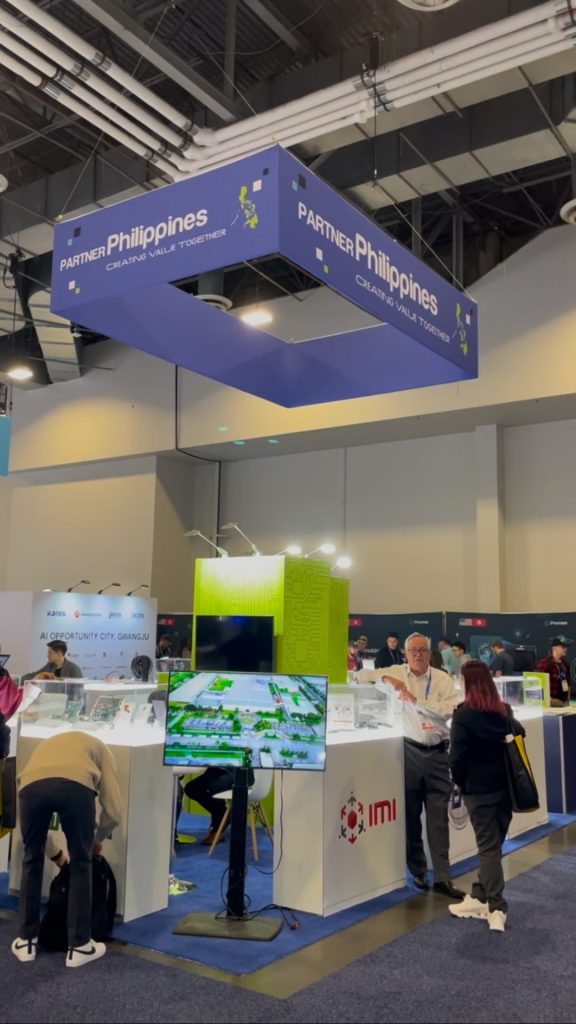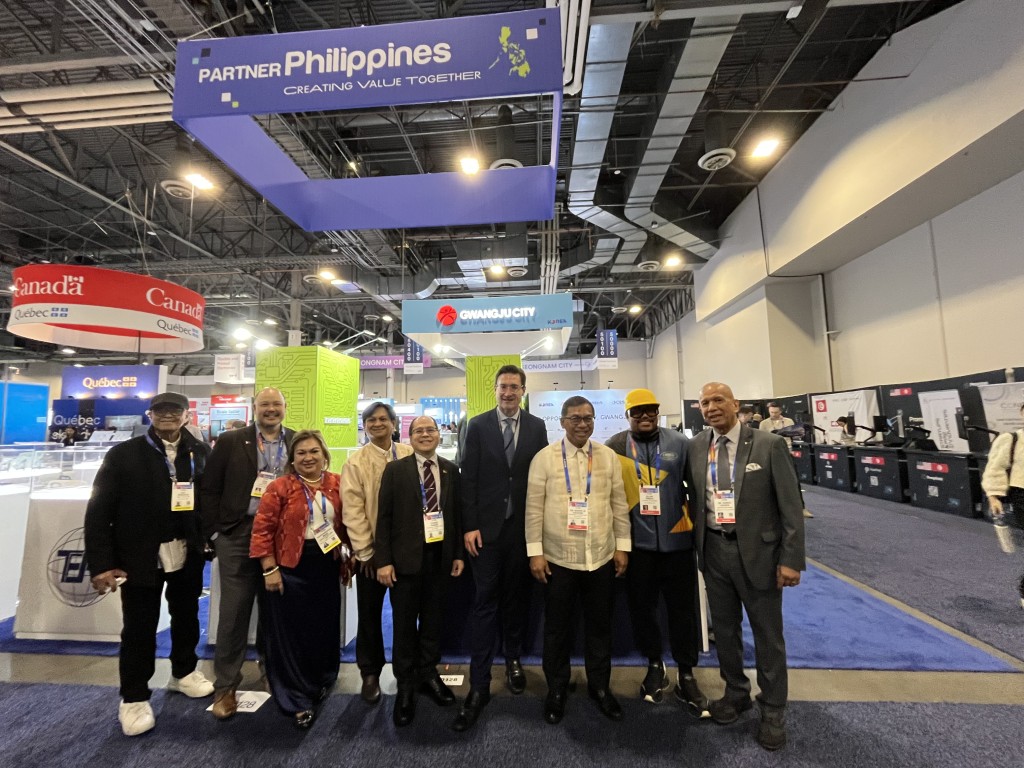Technology is poised to be a central focus of Donald Trump’s new term, as evidenced by the attendance of prominent CEOs at his inauguration. Breaking from tradition, figures like Elon Musk, Jeff Bezos, Mark Zuckerberg, Tim Cook, Sergey Brin, and Sundar Pichai were seated together with Trump family members and ahead of cabinet nominees, symbolically asserting the tech sector’s influence on the new administration. Merely days after assuming office, Trump announced the launch of the Stargate project, a $500 billion investment in Artificial Intelligence (AI) infrastructure amid the US deepening tech and trade rivalry with China. Not to be outdone, China soon introduced DeepSeek, a homegrown AI model it claims can rival American counterparts in performance while being significantly cheaper and requiring less computing power, signaling that the global AI race is just getting started.
With an outlook of double-digit global market growth, the Philippine electronics sector proactively seeks to capitalize on the emerging AI revolution. A high-level contingent recently participated in Las Vegas’ Consumer Electronics Show (CES), one of the most influential tech events in the world. The event served as a platform to showcase the country’s robust capabilities and business landscape to attract foreign investments. Government agencies, including the Department of Trade and Industry (DTI), the Philippine Economic Zone Authority (PEZA), and the Department of Science and Technology (DOST), joined forces with the Semiconductor and Electronics Industries in the Philippines Foundation, Inc. (SEIPI), a member of CES organizer Consumer Technology Association (CTA), to present PARTNERPhilippines, a flagship program aimed at establishing the country as a viable technology investment destination.
The Philippine Pavilion at CES 2025 featured PEZA locators Ionics EMS, Inc., Xinyx Design Consultancy and Services Inc., Integrated Micro-Electronics, Inc., Automated Technology (Phil) Inc., Leader Electronics (Philippines) Inc., Team Pacific Corporation, Tsukiden Electronics Philippines, Inc., Zero Motorcycles, and Int’l Precision Assemblies Inc., along with ecozone support enterprises Airspeed Philippines and Manila Electric Company (Meralco). The DOST booth showcased 23 Filipino innovations from startups and universities nationwide.
Electronics as an Economic Driver
The Philippine electronics sector is a critical pillar of the economy. Represented by SEIPI, the industry encompasses over 378 companies, suppliers, and academic institutions. Danilo Lachica, SEIPI President, emphasized that “the semiconductor and electronics industry accounts for 62% of our commodity exports. It generates the highest dollar revenue for the country, surpassing both the business process outsourcing (BPO) and overseas Filipino worker (OFW) sectors.”
In 2023, electronics exports reached $45.6 billion, representing a substantial portion of the nation’s total exports. From January to August 2024, the Philippines exported $27.4 billion of electronic products. The sector is the second-largest contributor to the country’s manufacturing Gross Value Added (GVA).
Navigating Headwinds
The Philippine electronics sector has been steering through choppy waters in its home harbor despite its significance. The Corporate Recovery and Tax Incentives for Enterprises Act (CREATE Law), enacted under the Duterte administration, inadvertently led to a problematic rationalization of incentives. Lachica noted that “there’s still high operating cost in the Philippines. Before rationalizing incentives, you should level the playing field regarding operating costs. We know power, logistics, and even labor can be expensive.” This policy change reportedly resulted in capital flight, with $1.6 billion in planned investments for the Philippines being diverted to Vietnam instead.
Geopolitical uncertainties pose significant risks. The fluctuating US-China trade relationship and the precarious situation in Taiwan, a substantial source of semiconductor wafers, create considerable concerns for the industry. Lachica cautioned, “If we lose that supply or it’s eroded again, similar to during the pandemic, our electronics industry will be compromised.” Furthermore, the Philippines’ limited trade recognition within the European Union restricts market access and collaborative opportunities.
Global Value Chain Upgrading
The Philippine electronics sector is pursuing a multi-pronged growth strategy to address these challenges. It is expanding beyond its traditional strength in assembly, testing, and packaging (ATP) towards higher-value activities in the supply chain. It includes a concerted effort to bolster IC design capabilities, enhance advanced ATP processes, and develop niche original design manufacturing (ODM) and subassembly/module manufacturing services.
The industry is actively pursuing a parts localization program to decrease its reliance on imported materials, which currently amount to approximately $5 billion annually. SEIPI advocates for government support in building a local wafer fabrication facility. “Establishing a local wafer fabrication facility will lessen reliance on Taiwan for semiconductor wafers and enhance the industry’s self-sufficiency,” Lachica highlighted.
Enabling Regulations and Government Support
The current Philippine administration’s support provides a degree of optimism for the future of the Philippine electronics sector. Workforce development initiatives by the Department of Education (DepEd) and the Technical Education and Skills Development Authority (TESDA) are crucial, as they align educational programs with industry needs and equip graduates with in-demand skills.
The current administration recognizes the industry’s pain points and actively seeks solutions. It passed the Corporate Recovery and Tax Incentives for Enterprises to Maximize Opportunities for Reinvigorating the Economy Act (CREATE More Act), aiming to rectify the initial CREATE law’s adverse effects and provide increased incentives, particularly for exporters. Philippine President Ferdinand Marcos, Jr. has also been actively promoting the country as an investment destination, and efforts are underway to improve the ease of doing business.
Keeping an Eye on US Trade Policies
The Philippine electronics sector closely monitors developments within the new US administration. The United States CHIPS and Science Act (US CHIPS Act) presents a significant opportunity for the Philippines to expand its semiconductor industry by becoming a key partner in onshoring manufacturing. The US CHIPS Act notably emphasizes advanced ATP, aligning closely with the Philippines’ existing strengths. The US government has publicly expressed its intention to triple semiconductor output in the Philippines, recognizing the country as a critical partner.
The Act’s International Technology Security and Innovation Fund (ITSI Fund), specifically designed to diversify US companies’ supply chains in Asia, is particularly interesting to the Philippines. It supports workforce development programs in the country, including initiatives to enhance the skills of Filipino professors and effectively transfer these skills to the industry.
Sectoral initiatives have pushed for a US-Philippines Free Trade Agreement (FTA), building on historical precedent. For example, a joint statement during Trump’s first term indicated openness, contrasting with the Biden administration’s apparent reluctance to acknowledge the Philippines’ continued interest.
“We continuously voice the industry’s concerns and emphasize the critical importance of securing an FTA with the United States to ensure that Philippine companies have equal access to federal procurement opportunities under the US Trade Agreements Act (TAA),” Lachica said.
The Philippine electronics sector hopes to see US support in light of the latter’s trade tensions with China. However, there is a sense of cautious pragmatism. “Let’s see. I want to think that Trump has learned what not to do from his past administration,” Lachica added.



